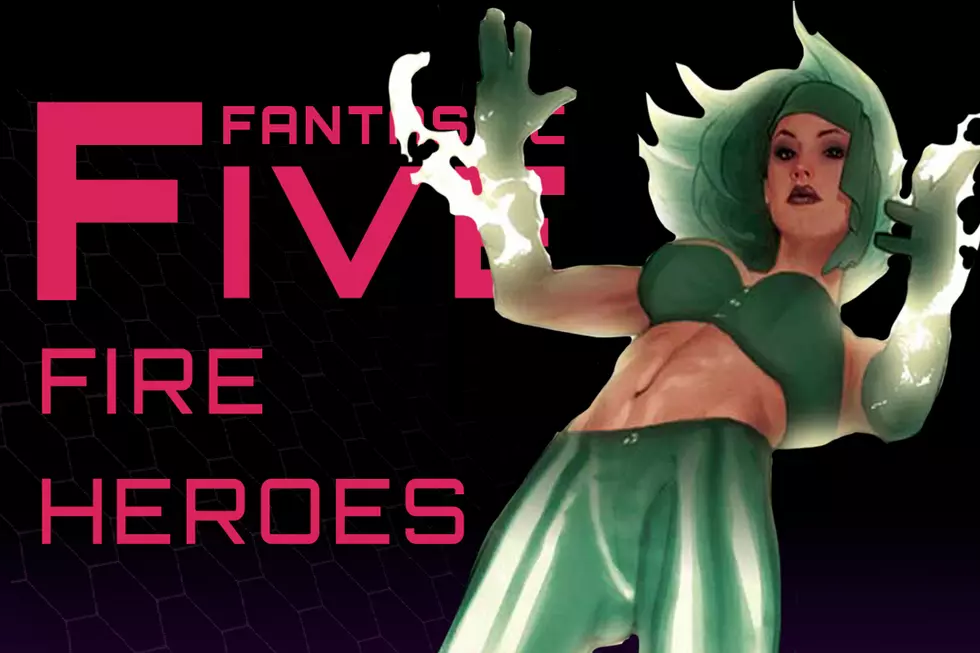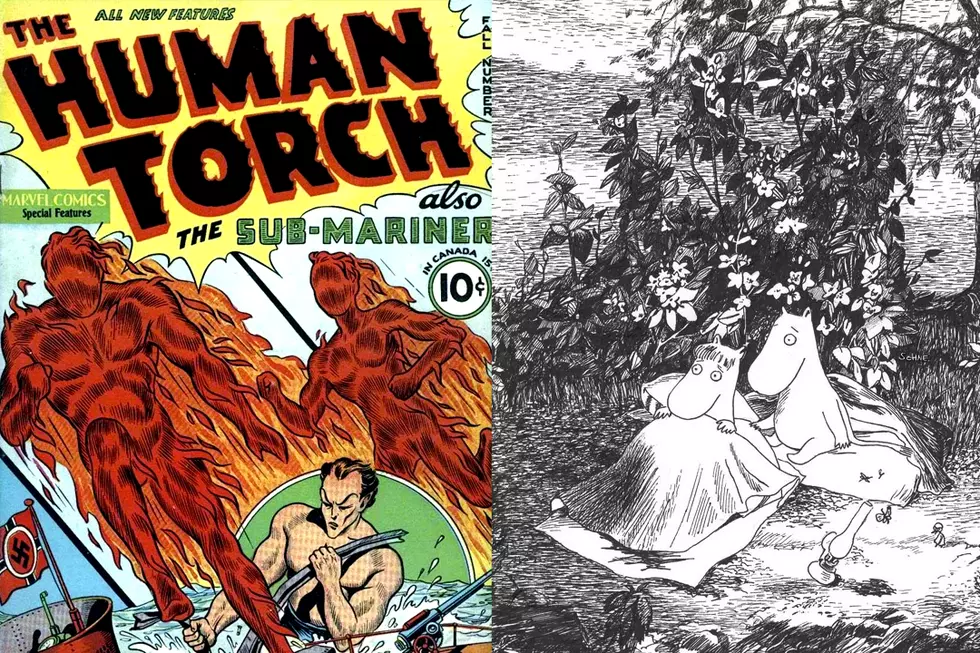
Flame On! Celebrating Carl Burgos, Creator of the Original Human Torch.
Conventional narratives of superhero comics' early years tend to be streamlined for the sake of easy digestion: Jerry Siegel and Joe Shuster created Superman; Bob Kane and Bill Finger and William Moulton Marston followed close behind with Batman and Wonder Woman; C.C. Beck's Captain Marvel soared to unheard-of heights of popularity; Will Eisner expanded the medium with his visual and storytelling innovations.
But in that initial "Golden Age Of Comics", new revolutions were occurring on a monthly basis --- a host of other writers and artists were helping create the landscape for all that would follow, unleashing countless colorful characters onto newsstands across America.
One of the most important milestones of that formative era was the launch of a title that established Martin Goodman's Timely Comics as a major player in the industry: Marvel Comics #1. The issue featured the first appearances of a half-dozen characters (Bill Everett's Sub-Mariner chief among them), but it was Carl Burgos' Human Torch, an android with the ability to burst into flame, who snagged the coveted headline slot.
Carl Burgos was born Max Finkelstein in New York City, on April 18th, 1916. After adopting Burgos as his professional moniker, he began working in the nascent comic industry in the late 1930s. He did a short stint alongside Bill Everett at Harry Chesler's art studio, contributing art to stories for various companies and publications, then moved to work for Funnies Inc., who were tapped by Timely to provide the content for their initial comic offerings.
Marvel Comics launched the company's comic line in August 1939, and was an immediate sensation. Retitled Marvel Mystery Comics with issue #2, the book established the Torch and Sub-Mariner as two of the company's breakout stars, and Burgos and Everett began to stretch out and experiment. In Marvel Mystery #7, they used the end of their respective stories to lay the groundwork for a story in issue in #8 that sent shockwaves through the industry --- the first-ever superhero crossover.
The Human Torch Vs. the Sub-Mariner was a grand epic woven through their characters' respective stories over the next three issues; an elemental battle that raged across cities and oceans, with writing and art duties shared equally by both creators. Suddenly, superheroes weren't separated into their own individual silos, but occupied a shared universe. It might seem now like a commonplace idea, but at that moment in time, it was nothing short of revelatory --- it sent fans' imaginations into overdrive, and set the standard for every multi-hero story that followed.
Burgos entered the military in 1942, serving in the Air Force and Signal Corps through World War II, and upon returning to civilian life, continued to create comics while simultaneously pursuing a career in advertising and commercial art. He participated in a short-lived revival of his signature character in the mid-'50s, and as Timely rebranded themselves Atlas Comics (later going on to become Marvel), he continued to provide covers, interior art, and serves on staff through the turn of the '60s.
Over the next decade, Burgos produced occasional comic work while also illustrating greeting cards, sheet music, and embarking on other commercial projects. He illustrated a 1965 story in Marvel's Strange Tales featuring the new, actually-human Human Torch (whom Stan Lee based on Burgos' original android character), and also pencilled a trio of Giant-Man stories in Tales To Astonish.
But while his former cohort Bill Everett worked for Marvel in various capacities, Burgos went off to upstart publisher M.F. Enterprises to helm the ill-fated 1966 Captain Marvel series, featuring a new hero whose power was separating his limbs in presumably intimidating fashion.
After Captain Marvel '66, Burgos withdrew from the comic industry, producing occasional sketches and non-comics projects, and doing stints as an editor for Fass and Harris' magazine lines up until his death at age 67 in 1984. He was posthumously elected to the Harvey Awards' Jack Kirby Hall Of Fame in 1996, and in 2016 will be inducted into the Eisner Hall Of Fame.
To mark the recent anniversary of his birth, we're proud to recognize the contributions of the creator of the Human Torch, the co-creator of the superhero crossover, and one of the groundbreaking pioneers of superhero fiction, the great Carl Burgos.
More From ComicsAlliance

![Unsinkable Ship: The Endearing Appeal Of Spideytorch [Love & Sex Week]](http://townsquare.media/site/622/files/2017/02/Spideytorch-Smoochies-Featured.png?w=980&q=75)
![First Family: The Best Fantastic Four Fan Art [Sci-Fi Week]](http://townsquare.media/site/622/files/2016/09/ff_featured.jpg?w=980&q=75)






